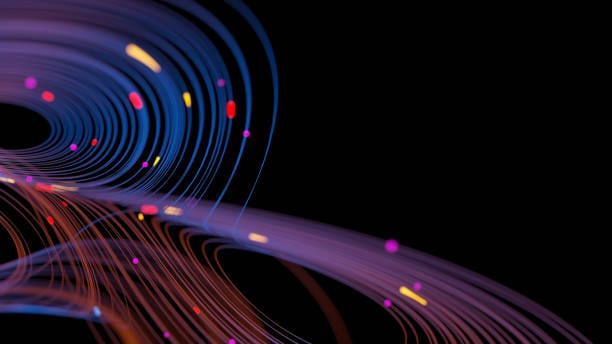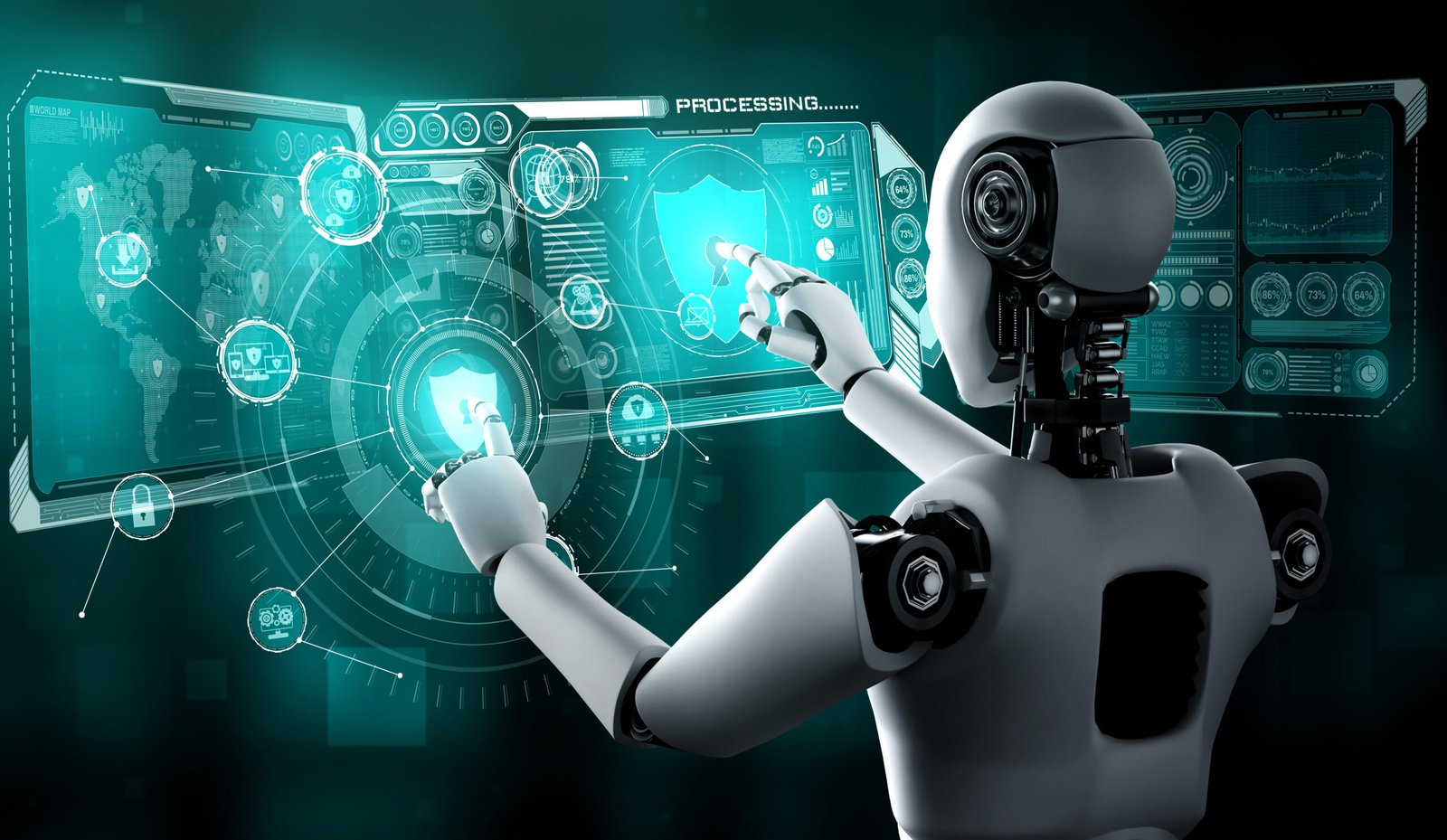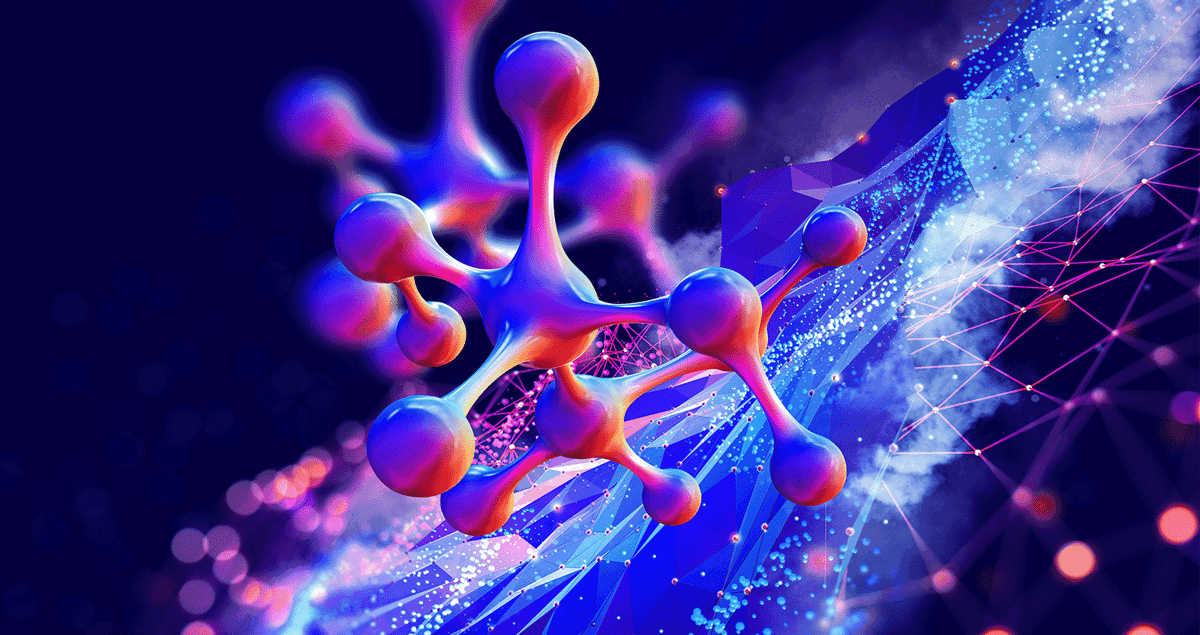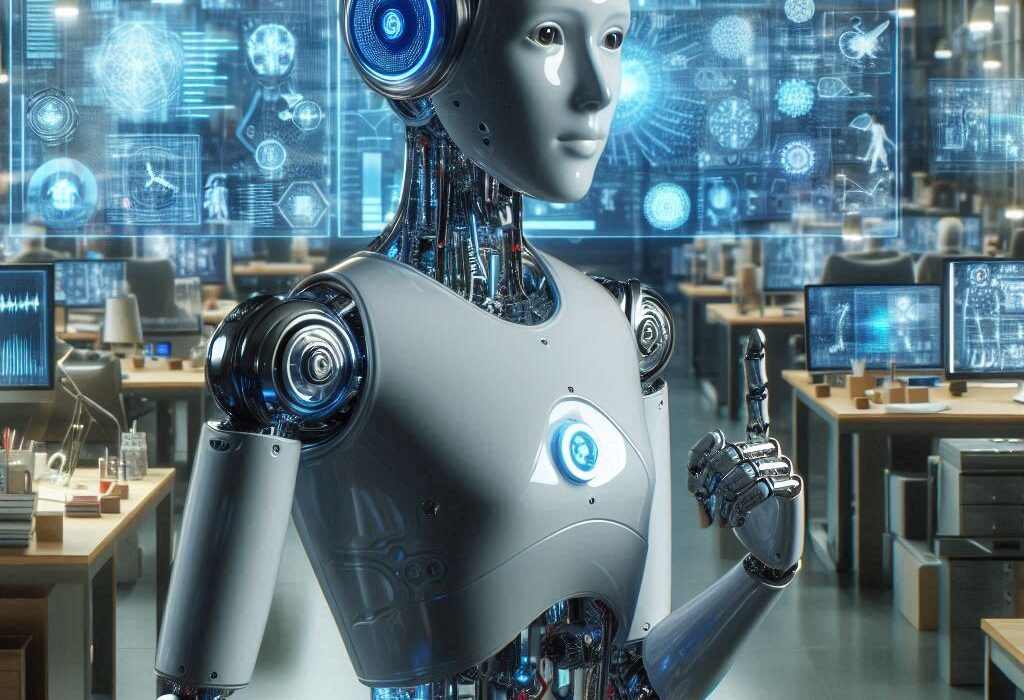Machine learning is no longer the secret language of data scientists tucked away in research labs — it has quietly woven itself into the fabric of our everyday lives. It is there when your phone unlocks at a glance, when your doctor makes a faster, more accurate diagnosis, when your favorite app seems to know exactly what you want next. It is a field of artificial intelligence that doesn’t simply follow instructions — it learns, adapts, and improves from experience, much like we do.
At its core, machine learning is about finding patterns in vast seas of data and making predictions or decisions without being explicitly programmed for every possible situation. It’s the difference between telling a child how to solve a problem step-by-step, and watching that child discover their own method after practicing it a hundred times. The more the machine “practices,” the better it gets.
What makes machine learning so transformative is its reach. It is not confined to one industry or purpose. It drives cars without human hands, detects fraud before it drains bank accounts, translates languages in real time, and even helps combat climate change. It thrives on diversity — of data, of challenges, of applications — and this versatility is what allows it to quietly revolutionize the world behind the scenes.
But the real magic happens when you stop seeing it as lines of code and start seeing it as a force that touches human lives. Each success story is not just a technical achievement; it is a moment when a problem once thought unsolvable found a solution in the collaboration between human creativity and machine intelligence.
In the following sections, we’ll explore ten vivid examples of machine learning in action — stories that move beyond algorithms and into the heart of how this technology is reshaping the way we live, work, and connect.
1. Self-Driving Cars and the New Age of Transportation
In the early 2010s, the idea of a car driving itself seemed like science fiction reserved for futuristic films. Today, the reality is inching closer with every passing year, and the beating heart of this technology is machine learning. Autonomous vehicles rely on a vast network of sensors, cameras, and radar systems, but data alone is not enough. The magic comes when machine learning algorithms process these sensory inputs, recognizing pedestrians, distinguishing between a shadow and a pothole, or predicting the movement of a cyclist.
The neural networks that power these vehicles are trained on millions of miles of driving footage, teaching them to interpret traffic signals, lane markings, and road signs under every conceivable weather and lighting condition. But perhaps the most fascinating challenge they face is decision-making in unpredictable situations — when a child darts into the street, when an animal crosses the highway, or when a traffic light malfunctions. Here, reinforcement learning algorithms simulate countless possible outcomes, selecting the safest course of action in fractions of a second.
While companies like Waymo, Tesla, and Baidu are leading the charge, the technology is still evolving. Yet its potential is enormous: reduced accidents, improved traffic flow, and the gift of mobility for those unable to drive. The self-driving car is not just a machine — it’s a student, learning from every journey, constantly rewriting its understanding of the road.
2. Medical Diagnosis Powered by Artificial Intelligence
In a quiet hospital room, a doctor examines a medical scan — but now, she is not alone. A second opinion comes from a machine learning system that has studied millions of similar images. In healthcare, machine learning is not replacing doctors but augmenting their skills, helping them detect diseases earlier and with greater accuracy.
One of the most impressive breakthroughs has been in radiology. Deep learning models, trained on enormous datasets of MRI scans, CT images, and X-rays, can spot the subtle signs of tumors, fractures, or infections that even seasoned professionals might miss. In oncology, such systems can identify early-stage cancers at a time when treatment is far more effective. In ophthalmology, they can detect diabetic retinopathy before symptoms appear.
But the power of machine learning in medicine extends beyond imaging. Predictive analytics can warn hospitals about patient deterioration, allowing interventions before a crisis occurs. Natural language processing (NLP) systems can read through decades of medical literature, suggesting new treatment strategies or identifying unexpected drug interactions.
The emotional weight of this technology is immense. It transforms fear into hope, giving patients and families answers faster and more reliably. And while no algorithm is perfect, its tireless capacity for pattern recognition makes it an invaluable partner in the fight for life.
3. Recommendation Engines that Shape What We See and Hear
Have you ever wondered why your Netflix homepage feels like it knows your taste better than you do? Or how Spotify can introduce you to a song you instantly love, even if you’ve never heard anything quite like it before? Behind the curtain lies one of the most commercially successful applications of machine learning: recommendation systems.
These systems work by analyzing your past behavior — the movies you watched, the songs you skipped, the products you clicked but didn’t buy. They also compare your habits to those of millions of other users, uncovering hidden patterns that reveal what you’re likely to enjoy next. The algorithms often blend two main approaches: collaborative filtering, which finds users with similar tastes, and content-based filtering, which examines the properties of the items themselves.
The scale of this personalization is staggering. YouTube processes billions of views daily, with machine learning deciding which video to suggest next. Amazon uses it to recommend products, turning casual browsing into a multi-billion-dollar revenue stream. These systems not only predict what you might want — they influence your tastes, shaping your entertainment choices and even your worldview.
While this raises philosophical questions about autonomy and the “filter bubble,” it’s also an example of machine learning’s deep integration into everyday life. Every click, every skip, every binge is another data point, another lesson for the machine.
4. Fraud Detection in Finance and Beyond
In the world of finance, trust is currency. But with the rise of digital banking and online transactions, fraud has become a persistent and evolving threat. Machine learning has stepped in as a powerful defense, spotting suspicious activity with speed and precision that no human team could match.
Traditional fraud detection relied on fixed rules: flag any transaction over a certain amount, or any purchase from an unusual location. But fraudsters adapt quickly, and static rules fall behind. Modern systems use anomaly detection — algorithms trained to recognize normal patterns of spending for each customer and alert analysts when something deviates. A $2 coffee in New York followed by a $900 jewelry purchase in Paris within minutes? The system knows something’s wrong.
Banks like JPMorgan Chase and PayPal deploy these models in real time, blocking fraudulent activity before it drains accounts. Beyond finance, similar techniques protect e-commerce sites, detect fake reviews, and even monitor cybersecurity breaches. These systems evolve with every attempt to trick them, becoming more resilient over time.
The stakes here are deeply personal. For the individual, it’s about protecting hard-earned money. For society, it’s about maintaining faith in the digital economy. Machine learning stands at that intersection, acting as both guardian and student.
5. Language Translation and Breaking Communication Barriers
Once, to speak across cultures required years of study or the help of a skilled translator. Now, a smartphone can bridge that gap in seconds. Machine learning has transformed language translation from clumsy, word-by-word substitutions into fluid, context-aware conversation.
Neural machine translation (NMT) systems, such as those powering Google Translate or DeepL, learn not just vocabulary but the nuances of grammar, tone, and idiomatic expression. They are trained on massive corpora of bilingual text, aligning concepts across languages and improving with every user interaction.
The impact is profound. A traveler in Tokyo can navigate a menu without guessing. A refugee can communicate urgent needs to aid workers. Businesses can operate across continents without losing meaning in the details. While cultural subtleties can still trip up even the best models, the pace of improvement is staggering.
Machine learning here is not just about efficiency — it’s about human connection. Every successful translation is a reminder that, despite our differences, communication is possible.
6. Personalized Education and Intelligent Tutoring Systems
Education has long been limited by the constraints of the classroom: one teacher, many students, and a single pace of instruction. Machine learning is changing that by enabling personalized learning experiences tailored to each student’s strengths, weaknesses, and learning style.
Intelligent tutoring systems can assess a student’s understanding in real time, adjusting the difficulty and style of questions accordingly. If a student struggles with fractions, the system offers targeted exercises and feedback. If they excel in geometry, it accelerates their progress rather than holding them back. These models learn from thousands of similar learners, predicting what kind of explanation will be most effective for each concept.
Companies like Duolingo use adaptive algorithms to keep language learners engaged, while platforms like Khan Academy analyze performance data to guide lesson planning. In classrooms, AI-powered analytics help teachers identify which students need extra help before falling behind.
The emotional core of this application lies in its ability to unlock potential. For a child who feels left behind in a crowded classroom, machine learning can offer a path to mastery — and with it, a renewed sense of confidence.
7. Climate Modeling and Environmental Protection
The climate crisis is one of the defining challenges of our era, and understanding its complexities requires immense computational power. Machine learning has emerged as a vital tool in climate science, capable of detecting patterns across datasets so massive that no human team could process them.
These models help predict extreme weather events, simulate the impact of policy changes, and track deforestation from satellite imagery. In agriculture, machine learning forecasts crop yields, identifies disease outbreaks, and optimizes irrigation, reducing water waste. In energy, it predicts demand patterns, allowing grids to integrate more renewable sources without instability.
Organizations like NASA and the European Space Agency feed petabytes of climate data into machine learning systems that refine predictions with each new observation. This enables governments and communities to prepare for floods, wildfires, and hurricanes with greater accuracy.
Here, machine learning is not just a tool — it’s part of humanity’s fight for survival. Each improved forecast is a chance to save lives and protect ecosystems.
8. Facial Recognition and Identity Verification
In airports, smartphones, and security systems, facial recognition technology has become increasingly common. Machine learning drives this capability, teaching computers to identify individuals based on subtle patterns in facial features.
Convolutional neural networks (CNNs) are trained on millions of labeled images, learning to detect everything from the distance between the eyes to the contour of a jawline. These systems are used for secure device unlocking, law enforcement searches, and even ticketless entry at events.
The convenience is undeniable, but so are the ethical debates. Concerns over privacy, bias, and misuse have sparked global conversations about regulation. For example, studies have shown that some facial recognition systems perform less accurately on darker skin tones — a flaw rooted in biased training data. Addressing these issues is now a priority for researchers.
The technology’s dual nature — as both a security enhancer and a potential surveillance tool — makes it one of the most controversial applications of machine learning. Its future will depend on how society balances innovation with rights and freedoms.
9. Supply Chain Optimization and Predictive Logistics
Behind every product you buy is a vast and intricate supply chain. Machine learning is quietly revolutionizing how goods move from factories to store shelves, making logistics faster, cheaper, and more sustainable.
Retail giants like Amazon use predictive models to anticipate demand in different regions, stocking warehouses accordingly. This reduces delivery times and minimizes overstocking. Shipping companies use route optimization algorithms to cut fuel consumption and improve delivery accuracy.
In manufacturing, machine learning forecasts when equipment will need maintenance, preventing costly breakdowns. In the wake of disruptions like the COVID-19 pandemic, these systems have been critical in adapting supply chains to sudden shifts in demand and availability.
While consumers may never see the algorithms at work, they feel the effects in faster deliveries, lower costs, and fewer out-of-stock frustrations. The quiet efficiency of machine learning here keeps the global economy humming.
10. Creative Arts and Generative Intelligence
The idea that machines can be creative once seemed absurd — creativity was seen as uniquely human. But machine learning has begun to blur that line. Generative models like GPT, DALL·E, and Midjourney can write stories, compose music, and create visual art that rivals human work.
These systems learn from enormous datasets of text, images, or audio, extracting the underlying patterns of style and structure. A musician can feed an AI model examples of jazz improvisation, and it can produce new compositions in the same style. A filmmaker can use AI to storyboard scenes in seconds. Even in fashion, algorithms generate clothing designs based on current trends.
Critics argue that this is imitation rather than true creativity, but the results are often stunning. For artists, machine learning can serve as a collaborator, offering fresh perspectives and inspiration. For the public, it opens access to creative tools once limited to trained professionals.
The emotional impact is complex — a mix of wonder at the possibilities and unease about the implications for human identity and labor. Yet it is undeniable that machine learning has entered the cultural arena, reshaping how art is made and experienced.






